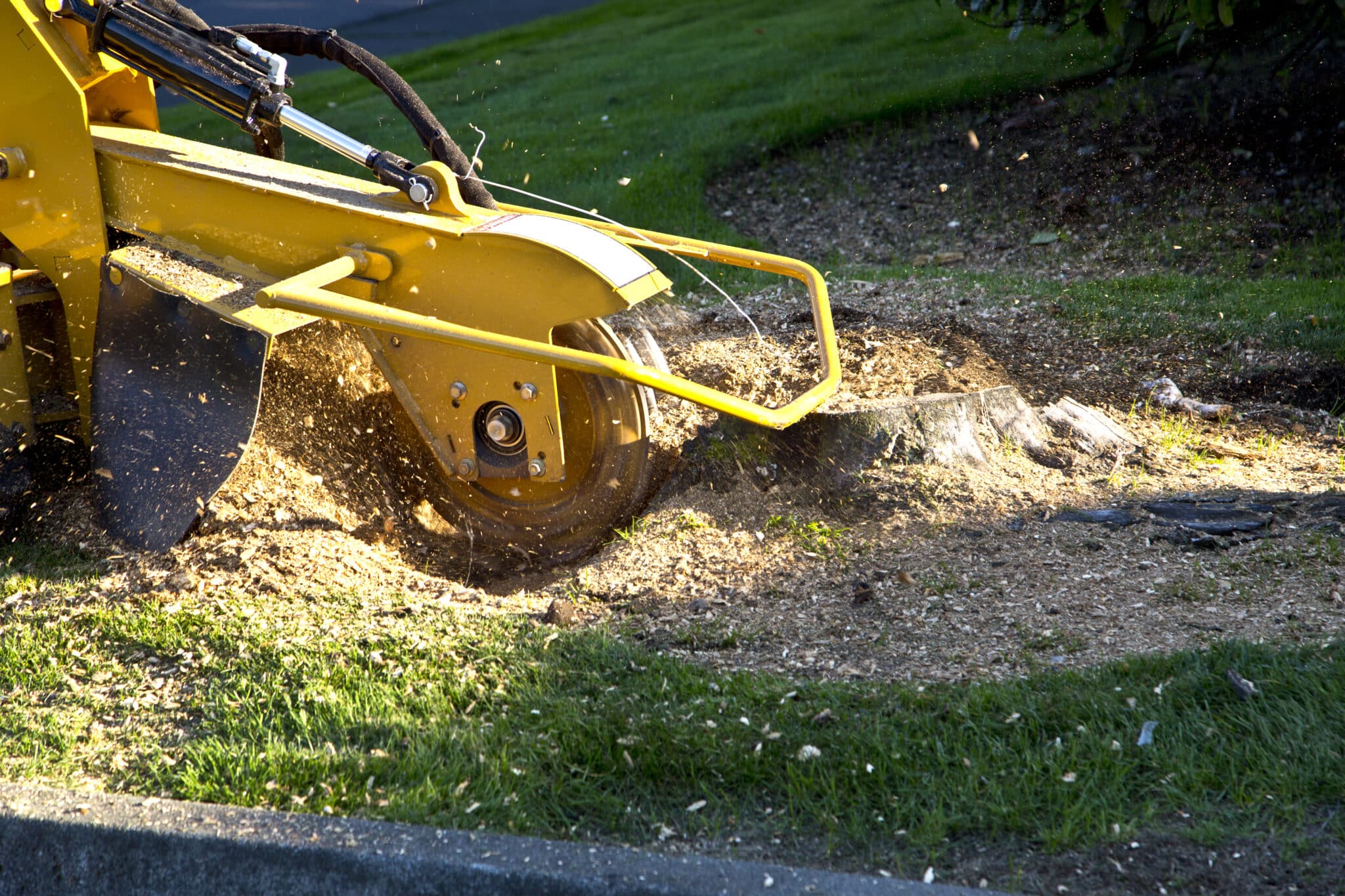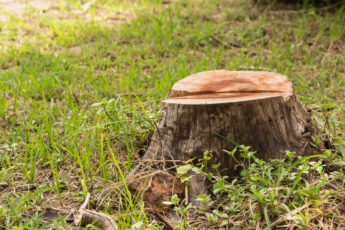Even if you remove the tree, you still have a stump in the ground. Removing the stump is usually a good idea for several reasons. Stumps can invite pests and diseases that can spread to other plants and trees, pose a tripping hazard, are difficult to mow and plant, and are generally not the most beautiful things to look at.
One of the tree stump removal options available is stump grinding. Here, we’ll explain stump grinding, what it involves, and how it works so you can decide if it’s right for you.
What is Stump Grinding?
Removing a tree stump from your property is called stump grinding. The stump is pulverized by a large machine with small concave shaped teeth that are attached to a wheel. These teeth turn your stump and roots into a pile of wood chips. Arborists use stump grinders when they remove a tree. Using a stump grinder is the most effective method of removing a stump.
How to do Stump Grinding?
On average, a professional tree service will grind the stump about 8 to 10 inches below ground level. It costs less than tree stump removal and does not damage your landscaping. It doesn’t require deep digging. Plus, there is no large hole to fill in or problems with underground lines for utilities and water pipes. It can take 15 minutes to two hours, depending on the size and location of the stump. The entire tree stump will be ground into small wood chips, which can be put into the remaining space or the garden.
Why is Stump Grinding Important?
Complete stump removal is not required for dry tree stumps or stumps that do not pose a physical risk or nuisance to you or your property. There are various reasons why you should consider stump grinding.
Decay
The stump left after cutting down a tree will rot over time. It’s not the most aesthetic and long-term choice, but rotting wood can also attract fungi and pests that can infect the rest of your garden.
Additional Growth
A tree with a healthy root system may produce new shoots even after it has been cut down. The root system could also grow, causing problems for nearby foundations, pipes, and underground infrastructure.
The stump left after cutting down a tree will rot over time. It’s not the most long-term visually appealing choice, but rotting wood can also attract fungi and pests that can infect the rest of your garden.
Protects Other Nearby Trees
Leaving a stump in your yard for a long time can hinder nearby trees’ growth and development. For example, its roots will access water and nutrients from the ground. This can affect other plants that rely on nutrients to thrive. By spending money on professional stump removal, you can protect and promote the healthy growth of nearby trees.
Safety
Depending on the height at which it was cut, the stump can become a severe tripping hazard in your garden.
Garden Maintenance
The tree stump will likely interfere with the maintenance of your garden, rendering part of your lawn or garden unusable. Grinding a stump will make room for it, remove obstacles so you can mow and maintain your garden more efficiently, and make it look better overall.
Increases Property Value
If you plan to sell your home and tree stumps remain in your yard, the value of your property may decrease. Potential buyers generally find stumps unsightly, and people will likely want to pay for stump removal immediately after purchasing a home.
By spending money on stump removal, you can eliminate the eyesore and attract more buyers, increasing the property’s value. Remember that first impressions matter and will often determine whether you get a fair price for a property.
How much does it cost to grind a stump?
Several variables affect the cost of stump grinding. For example, when creating an offer, Greenwood Tree Company take into account things like:
- Stump dimensions
- Stump age
- Tree type
- Access required
- How much of the stump is left?
- If the number of surface roots is large
These factors affect the cost of stump grinding. Professionals can give you reasonable quotes after examining these factors.
Are you wondering what to do after stump grinding to eliminate growth and pests? Follow these maintenance tips for sustainable stump grinding.
Maintenance Tips After Stump Grinding
Before replanting trees in the exact location, you must adhere to specific management standards if you have removed an old tree or ground down a stump. So, what actions should you take:
- Remove wood chips and other debris left behind by the stump.
- Remove any exposed roots from the old plant.
- Let the remaining roots break down over time. Future plants may only be as healthy if the procedure is timely.
- Add topsoil to the remaining hole.
- The area is now ready for sowing seeds or new plants.
Get Tree Stumps Professionally Removed
Do you need help planting after stump grinding? Removing old wood can be a complicated process at first. However, after this, you need to change your perspective entirely and think about how to treat the same space and how it can contribute to new development.
Greenwood Tree Company can quickly and efficiently remove tree stumps from any location using specialist equipment used by high-standard arborists.
Stump grinding is a necessary procedure that can improve the appearance of your land and keep your home pest-free. Remove all stumps from your property as soon as possible. Work with a qualified arborist who can complete the task quickly and achieve the best results.
At Greenwood, we have experience in stump grinding, tree maintenance, and tree removal. We can help you get rid of that pesky stump for good. Call us today to learn more about stump grinding services. We’ll happily provide you with a free quote and answer any questions. Contact us now to get started!





